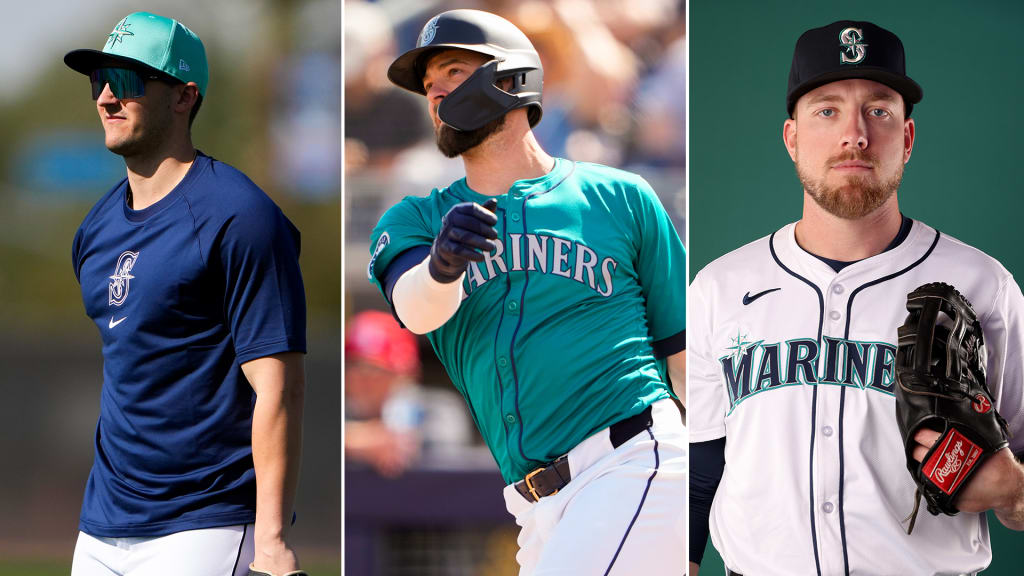How will Mariners approach the corners in 2024?

This story was excerpted from Daniel Kramer's Mariners Beat newsletter. To read the full newsletter, click here. And subscribe to get it regularly in your inbox.
PEORIA, Ariz. -- An intriguing question facing the Mariners after their player-position overhaul this offseason is how manager Scott Servais will deploy every outfielder not named Julio Rodríguez.
Mitch Haniger has returned but will be monitored closely given his injury history. Dominic Canzone had a few big moments after arriving at the Trade Deadline but played sparingly down the stretch. New addition Luke Raley comes with big power potential, but he almost exclusively played against righties with Tampa Bay.
Will there be platoons? Is there a designated fourth outfielder? Or will this feature a matchup-driven rotation?
“I think all of them may be correct,” Servais said.
The Mariners also have Dylan Moore and Sam Haggerty, who have outfield experience, and Samad Taylor looks like he’ll be a bench piece at some point -- maybe even prospect Jonatan Clase, too.
“I like the setup of our outfield, I think it’s really good,” Servais said.
Here’s a breakdown of the three who will mostly comprise the corner outfield spots (in alphabetical order):
Dominic Canzone
What he does well: There’s a ton of raw power that might be untapped. Canzone crushed five homers after joining the Mariners, which averaged 106.7 mph and 406 feet -- the second- and fourth-best marks on the team. And he put on 15 pounds of muscle this offseason to do even more damage.
What he’s working on: Canzone’s arm strength ranked in Statcast’s 88th percentile, but his accuracy was a work in progress, as were his reads on hard-hit balls when going back and/or into the gaps. Some Mariners coaches believe Canzone has more offensive potential than his predecessor, Jarred Kelenic, but there’s room for defensive growth.
What he said: “Hip mobility was a big thing I struggled a little bit with last year … basically, just being stiff in my lower half. So I did a lot of stretching. I went to a trainer and found a few drills that I really liked, so I’ve kind of just gone off of those.”
Mitch Haniger
What he does well: The track record. At his best, Haniger has been a middle-order force with as many as 39 homers back in 2021. Defensively, he still has a cannon.
What he’s working on: Haniger has lost some wheels into his 30s, with his sprint speed in decline each of the past three years down to an average of 26.7 feet per second last year (27.0 is league average). And while this isn’t a skill, health will always be a key to his success, and Haniger will have a runway for more rest and DH days sparingly thanks to the depth around him.
What he said: “As you get older, you've just got to be smarter about the workload. Like, get what you need and no more. And so as part of that, it's the experience and knowing yourself.”
Luke Raley
What he does well: Among the trio, last year he was the fastest (28.8 feet per second sprint speed) and has the strongest arm (91.3 mph average on max-effort throws), and the Mariners are comfortable making him the first in line to spell Rodríguez on his rare off-days. Raley also raked, with a 45.7% hard-hit rate and 114.2 mph max exit velocity, which led to 19 homers in 118 games.
This browser does not support the video element.
What he’s working on: He graded slightly below average with his range but was overall a productive outfielder. Swing-and-miss was a big part of his game last year, with a 31.5% strikeout rate that was higher than any Mariners regular. Raley also faced the challenges of pitchers adjusting to him, with a .677 OPS in the second half after a .925 OPS in the first. Moreover, the Rays almost only used him against righties last year.
What he said: “Minor League-wise, I was always fine against lefties. I just didn't really get the opportunity last year to play against lefties much, so we'll see how it works out here.”
Things could also be in flux, given the depth and how early it is.
“Not just me, but most managers, you ride the hot hand,” Servais said. “If a guy’s doing well and he’s tearing it up, you keep him in there. You also have to be smart with certain guys, to give them days off. There’ll be some guys that are not going to be happy every day not being in the lineup, but that’s a good thing. You need depth, and things will happen, and a guy gets banged up.”